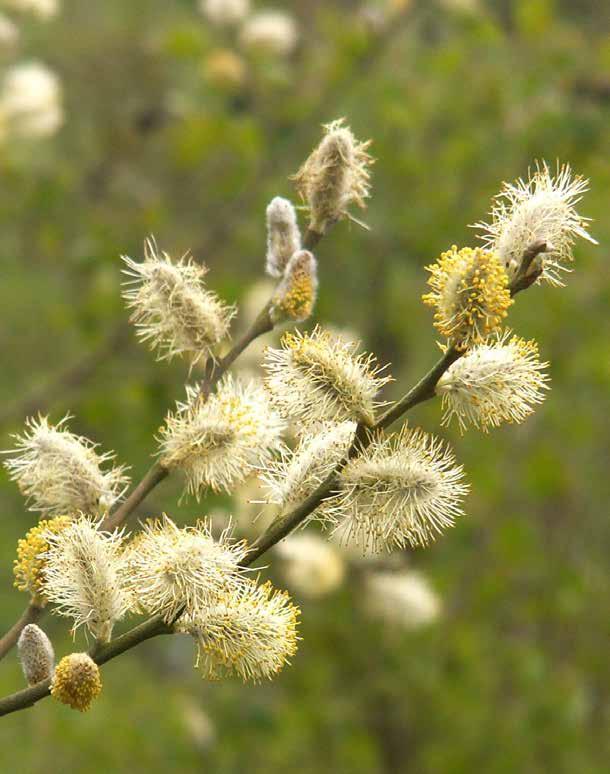
2 minute read
Time to enjoy the ancient woods
Springtime brings new life to the countryside after the long winter chill and so this is a wonderful season to enjoy the woods, and especially the ancient woodlands of the Peak District and nearby areas. These landscapes, so rich in wildlife species are good all year round, but particularly in spring. The tree canopies echo with songs and territorial claims of great tits, blue tits, and the warblers, chiffchaff, and blackcap. The blackbirds, robins, and tawny owls are well ahead, and many have already nested. In woods with ancient beeches and parks such as Chatsworth or Haddon for instance, the songs and calls of nuthatches ring out. Nearby, expect to hear the high pitched territorial calls of great spotted woodpeckers or else their drumming from the treetops. Leaf-burst changes the atmosphere of the woodland as bright green leaves suddenly brighten the canopy. If all goes well, and with climate change you just don’t know, the myriad insects (particularly caterpillars) that will feed on these leaves in May and June, provide essential food for the baby birds in the nest and then once again when they fledge.
From April through into May, the hazel catkins have died away but are replaced by other tree flowers such as the ubiquitous pussy willows, and not so far behind, the erect white flowers of bird cherry. This is one of our rarer tree species and more common in upland and western zones, but also one of the more striking flowering trees in our ancient woods. Indeed, many tree flowers are hardly noticed perhaps because they are small and often, they are hidden high in the tree canopy. Some like birch catkins make their presence felt through hay fever! However, tree flowers can be especially important for pollinating insects such as honeybees, and the seeds produced in autumn and winter support birds such as siskins, lesser redpolls, and many others. Birch and alder are especially important along woodland edges in the former case and especially riversides in the latter.
Advertisement

The woods in springtime are also good for many butterfly species as they emerge from hibernation or from pupae and seek the warmth of sheltered, sunny glades. Small tortoiseshells, peacocks, and commas are amongst the first species to appear. They are soon joined by speckled woods, orangetips, green-veined whites, and holly blues. Males display against each other to establish territories and then, hopefully, to attract suitable females. The females once mated will seek out the right foodplants for their larvae and on which to lay their eggs.
In nearby gardens, these butterflies will explore these human landscapes as merely clearings in the wood, the treescape. They come in search of rides and glades and their flowers and sunlight. Plants such as the garden honesty or dame’s violet in a garden border will prove irresistible attractions for some species like the pretty orange-tips. Similarly, in a damp lawn, pond edge, marsh or meadow, cuckoo flower is an excellent flower to grow. Spring bulbs and early flowering shrubs all help support wildlife under pressure and your garden makes a difference.
With over 20 years’ experience in designing, manufacturing and installing bespoke garden buildings throughout the UK, you can trust that Cabin Master will deliver the perfect space for your garden. And the possibilites are endless...

• Garden Bar
• Home Gym
• Office Space
• Family Room
• Arctic Cabins BBQ Huts
• Hot Tub and Swim Spas












